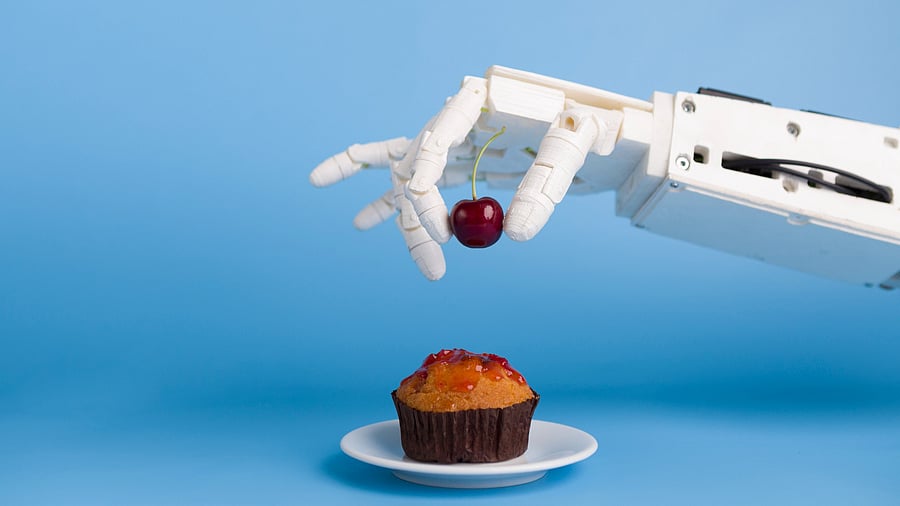
Representative image indicating a robot chef
Credit: iStock Photo
In the post-Covid environment, where restaurant chains continue to struggle with labor shortages and soaring costs as well as orders that come out wrong, many are now seeking ways to automate at least some functions in the kitchen.
Chipotle, where labour costs could reach $2.7 billion this year, or a quarter of its revenue, has been testing the Autocado, a machine that can cut, pit and scoop out an avocado in 26 seconds. White Castle has installed a system called Flippy to make fries and other items in 18 locations in the United States.
And Sweetgreen, the fast-casual salad chain, will have an automated salad-making system, the Infinite Kitchen, in about a dozen of its 240 restaurants by the end of this year.
But despite high interest in robots in the kitchen and years of efforts, they have yet to take off.
Unlike car factories or Amazon warehouses, which rely on robots to perform repeatable actions, restaurant kitchens run on multitasking. Flipping pancakes requires a different system from one that dispenses coffee or makes spaghetti. Moreover, producing potentially sticky, gooey or cheesy foods means robots need to be easy to clean to maintain food-safety standards.
And while automated systems may reduce labour costs over time, many have a steep upfront price tag — typically six figures.
Nor is it easy to squeeze an automated system into already tight kitchens or retrofit an entire kitchen.
Sweetgreen took seven weeks to overhaul its location near Madison Square Garden in New York with an automated system. It is now focusing more on new outlets, where it can build for automation from the start. Of the 40 restaurants the company plans to open in 2025, about half are expected to be automated, at a cost of as much as $550,000 each.
The system is worth it, Sweetgreen executives say. The automated Infinite Kitchen can churn out 500 bowls in an hour, compared with a top human speed of about 300, and locations using the Infinite Kitchen are considerably more profitable than the average.
A move toward automation in restaurants could save the quick-service industry as much as $12 billion a year in wages, consulting firm Aaron Allen & Associates estimated. Those wages are often meager, but they offer a lifeline for millions of people without a college education or other skills.